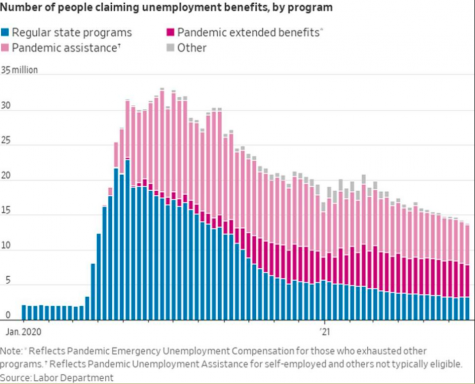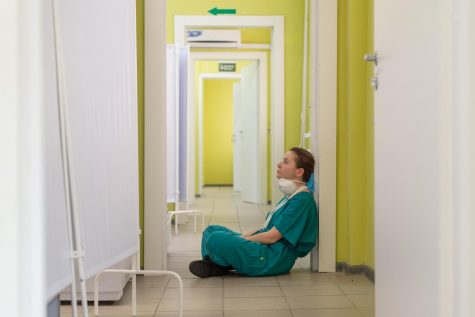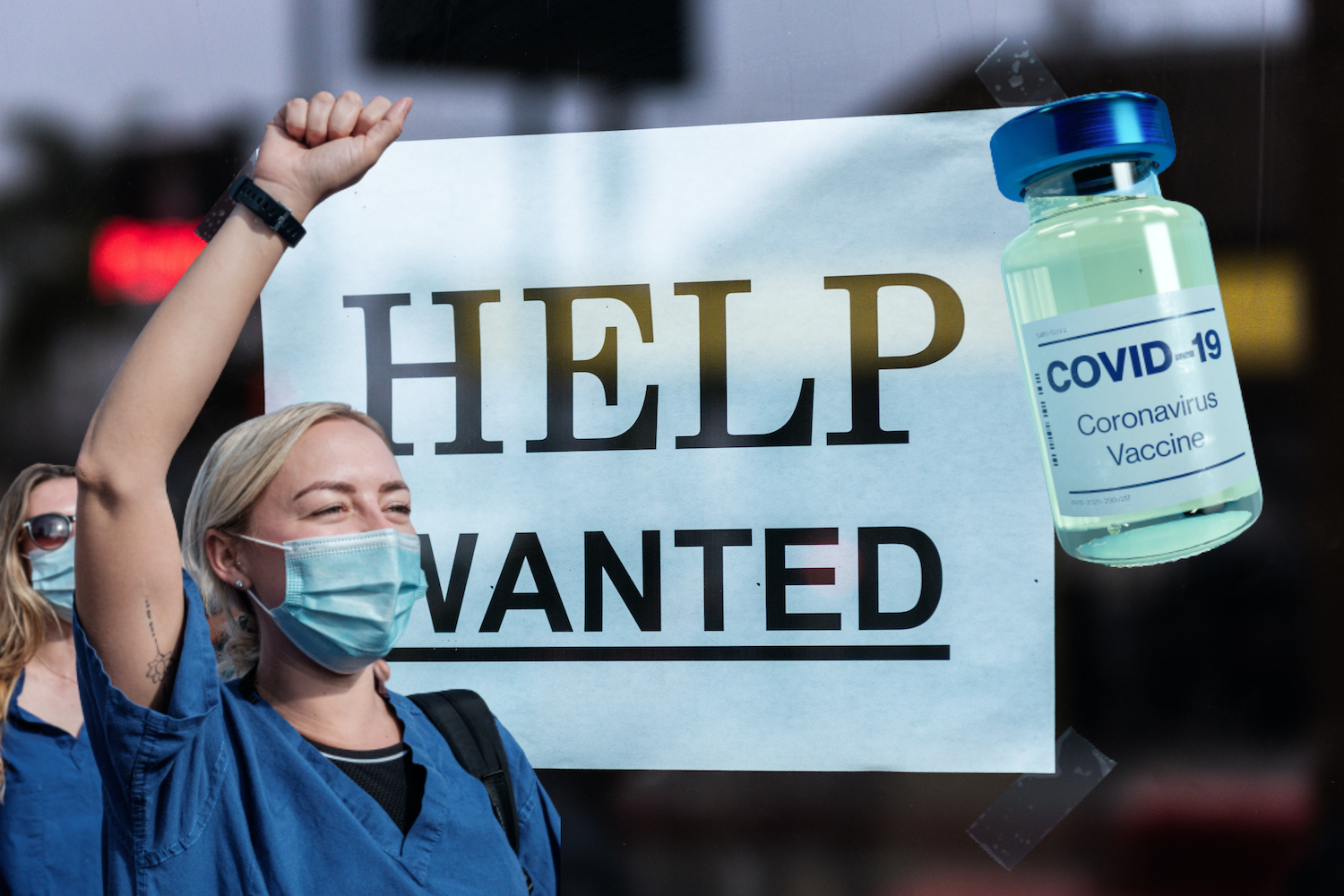COVID and the nationwide labor shortage
October 5, 2021
Although many states are reopening as a result of lowering COVID positivity rates and an increase in vaccine roll-out, many business owners are unable to function at their fullest potential due to a lack of employees. According to Forbes, over 60% of small business owners are reporting a shortage of labor, with 80% of those claiming the need for labor is causing lost sales. Different experts have varying opinions on the root cause of this shortage.
Some look towards the unemployment benefits from June and July and blame this increased income for potential new hires’ reluctance to return to work. Over the summer, almost 14 million individuals were receiving some form of unemployment benefit, while pre-COVID, only 2 million were. While the additional $1200 a month many people were receiving ended by September, some business owners claim that having to compete with the government assistance delayed their ability to fully reopen.

However, others propose a secondary cause of this imbalance between the supply and demand of workers, especially in the service sector. The Florida Phoenix attributes the changes in the labor force to the possibility that workers are not readily searching for jobs specifically in the foodservice and hospitality industries due to their historically low health benefits and limited wages. Many of the pre-Covid workers in the industry were laid off as the businesses closed during quarantine, and even when jobs are offered back to them, they are not taken. The Phoenix proposes the pandemic allowed workers to reevaluate their worth, and look for a more beneficial job.
A third consideration, though, is the fact that COVID has not been “beaten” yet. While 55% of the American population is vaccinated against the virus, with more receiving their shots daily, some individuals have not returned to work out of a fear of being more vulnerable to the virus, especially with the more contagious Delta variant rapidly spreading and mask mandates being lifted all across the country. Further, the lack of available child care keeps many parents, especially mothers out of the workforce, some permanently.
View this post on Instagram
Employers are working hard to combat this issue, regardless of the cause by instituting a multitude of benefits. Businesses are offering higher minimum wages, significant signing bonuses, and some restaurants are even offering 401ks and health insurance, benefits that were not common pre-COVID.
While this labor shortage is not ideal for business owners, it does offer a unique opportunity to teenagers in search of their first job. It has never been easier to find entry-level jobs in need of workers, even those who have no experience.
Senior Shelby Drinkwater, an employee of Maple Street Biscuit Company says “Right now, my management will hire anyone. We are so understaffed that if someone has to call out, there is no one available to take that shift. I can’t even ask for a weekend off to go tour colleges without getting scheduled.”
Until the available jobs are filled, however, business owners are forced to overschedule and overwork the employees they do have which can lead to burnout. According to Business Insider, in a recent Monster Jobs poll, 95% of individuals who do currently have a job are considering quitting, with the main cited reason being feeling burnt out.
The highest rates of workers experiencing burnout are being found among hospital staffs. The AAMC cites the surge of the Delta variant in recent months is causing such extreme nursing shortages that they have resorted to an “all hands on deck scramble,” with many hospitals relying on medical students and administrators being forced to fill the voids. Some hospitals are offering signing bonuses as high as $25,000, reflecting their desperation for more workers.

The labor shortage isn’t just affecting workers, but also patrons of the afflicted businesses.
“I went to Krispy Kreme at 7 a.m. before school to get donuts for the senior lounge, but they had a sign out front that said they didn’t have enough workers to open that early anymore. I was forced to go to Dunkin Donuts up the road, risking being late to school.” explained Eleanor Amoriello (’22).
While experts have failed to agree on the cause of the labor shortage outside of a “second-impact” of sorts post-pandemic, they all agree it is a temporary issue that should be mostly resolved in the coming months, pending lowered COVID cases.

